Cactus Root Systems: 4 Types of Cactus Roots
Have you ever wondered if cacti have roots? In this article, we will explore the fascinating world of cactus roots and uncover their unique characteristics.
Cacti are special types of plants that can withstand tough and unfriendly environments. They have amazing ways to survive in harsh conditions. Instead of leaves, they have thorns called spines that protect them and help them retain moisture. The cacti’s stems are thick and have a waxy layer on the outside that holds water and keeps it from escaping. The roots of cacti are also uniquely designed to help them survive in dry areas with high temperatures.
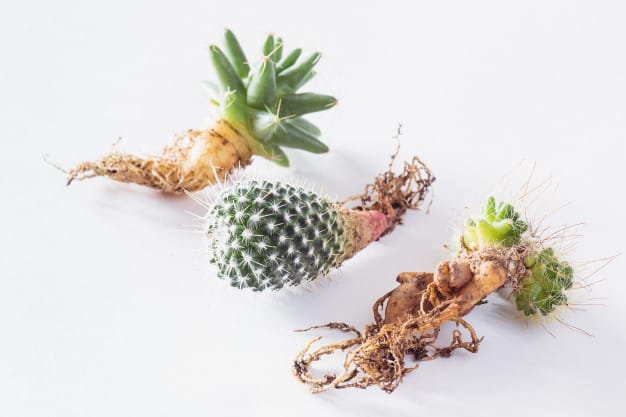
Contents
Characteristics of Cactus Root Systems
Do cacti have roots? Absolutely! Cacti, like all plants, possess root systems that play a crucial role in their survival. These root systems have unique characteristics that enable cacti to thrive in their harsh and arid environments.
Cacti live in places where the weather is very dry and hot. They don’t get a lot of rain, and the soil they grow in is not very good for growing plants. The soil is often dry and cracked, which makes it hard for cacti to get water and nutrients.
But cacti have evolved special root systems to overcome these challenges. Their roots are small and don’t go very deep into the ground, but they are very effective at collecting water and nutrients. The roots are covered in a protective layer that prevents water from escaping. Some cacti have thick and fleshy roots that act like storage organs, storing food and water for the plant to use later.
Most cacti have fibrous roots that spread out in the soil. These roots are made of a strong and flexible tissue that helps the plant absorb water and nutrients. They also have tiny hairs on the outside of the roots that soak up water like a sponge. These hairs grow at the tips of the roots and are constantly being replaced as the roots grow.
Parts of the Cactus Root System
Let’s now delve into the diverse and intriguing roots of cacti. From taproots to tuberous roots, these amazing plants display a variety of root adaptations to survive in challenging environments.
To ensure their survival in different types of soil and landscapes, cacti have developed various roots that help them adapt to their surroundings. Each type of root serves a specific purpose for the cactus species. While it’s true that cacti are commonly found in dry and desert regions of America, it’s important to note that they can also grow in other environments that are often overlooked. Some cacti can be found in high-altitude areas with cold and dry climates, as well as in more humid regions.
Now, let’s explore the different shapes and types of cactus roots that are most commonly observed.
Taproots
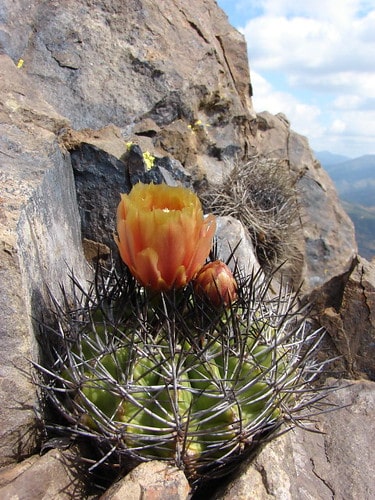
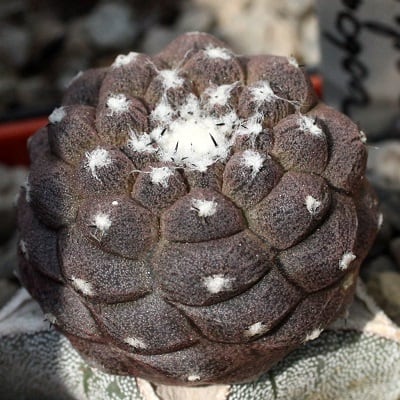

Some plants that grow in dry soils or are tall and need a strong anchor have a special kind of root system called a taproot. This type of root is seen in many tall cacti that need a strong and deep root to support their height. These taproots can extend several yards into the ground.
Having deep roots allows cacti to access water and nutrients from deeper sources, which is especially valuable during times of drought. These roots can shrink when there is a lack of water, helping the plant survive in harsh conditions.
Cacti with taproots have a firm grip on the soil and can reach deeper for essential resources compared to other plants. If you want your cacti to grow to their full size, it is recommended to use deep and wide pots that can accommodate their extensive root systems.
Fibrous Roots
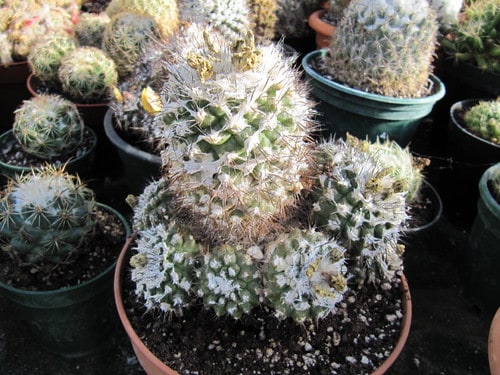
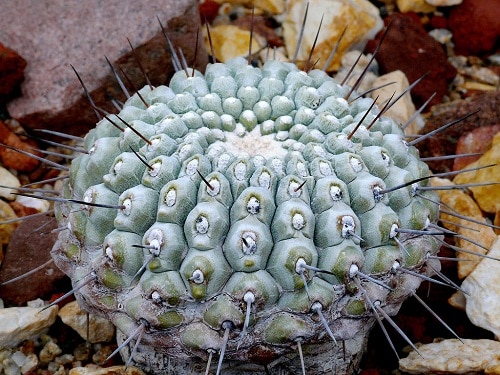
Most cacti have root systems that spread out widely. In fact, some cactus roots can grow as far as 15 feet away from the base of the plant. These roots are located near the surface of the soil, allowing the plant to quickly collect water when it rains. When a rain shower occurs, the roots, which were previously wrinkled, absorb water and become active. The cactus also grows new lateral roots to make sure it soaks up every last drop of moisture. However, when dry conditions return, the roots shrink again, and the newly formed lateral roots fall off.
The cactus produces different roots that are similar in thickness and importance. These roots mainly extend within the top layers of the soil and do not go very deep. They are specially adapted to rapidly absorb any water present in the soil. By spreading out extensively, these roots can cover a larger area and ensure better hydration for the plant. For this reason, cacti thrive when planted in wide pots that allow their roots to explore a larger space.
Napiform Roots
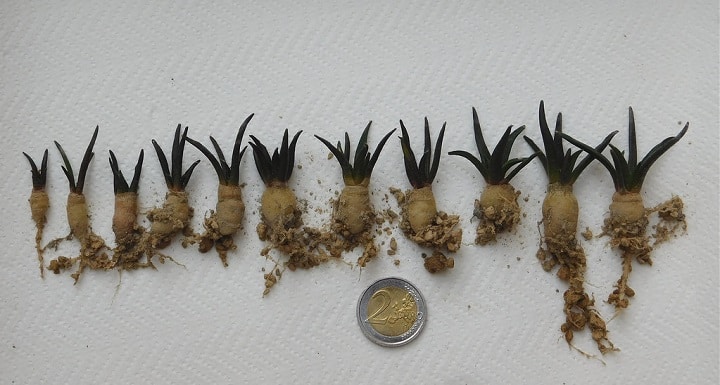
Cacti with roots that resemble the shape of a turnip have a wide main root that stores liquids. This main root gradually becomes narrower towards the end. Additionally, secondary roots sprout from this main root, but they are not as thick as the main one. Cacti with these types of roots thrive when planted in deep pots and can tolerate being watered less frequently.
Tuberous Roots
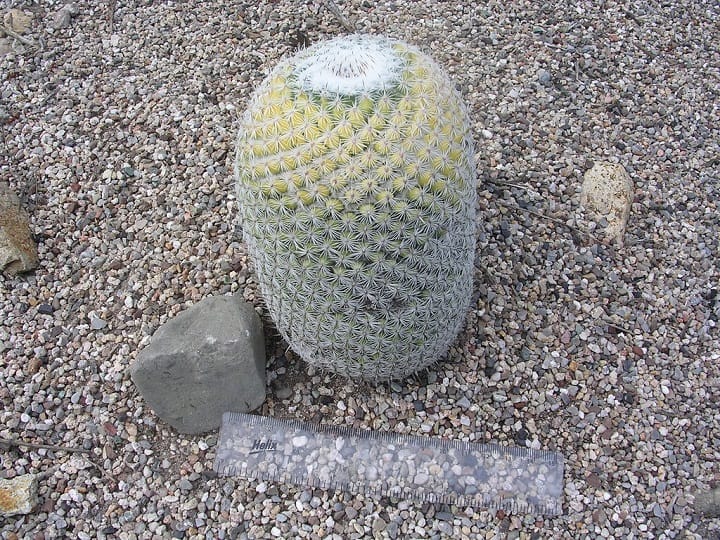
Tuberous roots are unique because they grow downwards and branch out, appearing similar to tubers. These roots are quite thick and have a significant capacity for storing nutrients and water. Additionally, they can produce thin and extensive secondary roots.
To accommodate tuberous roots, it is advisable to use a deep pot. Even though these roots don’t necessarily penetrate deep into the ground, the use of a deep pot provides the cactus with more space and freedom for root growth.
Should You Prune Cactus Roots?
When taking care of cacti, we often overlook the importance of their roots. However, when it’s time to transfer them to a new pot, gardeners may wonder if they should trim long root strands or dense root clusters.
Roots serve as the lifeline for all plants, and cacti are no exception. Typically, cactus root systems consist of main roots that spread either shallow or deep into the soil. These main roots intertwine with a network of fine hair-like roots, which help transport water and nutrients to the plant.
Hair roots on cacti have a short lifespan, usually lasting only a few hours or days. Fine roots also have a limited time before they shed in dry conditions and regrow if needed. Cutting into this natural root cycle should only be considered as a last resort and requires careful consideration.
If you decide to prune cactus roots, make sure to follow these steps:
- Disinfect pruning tools to prevent the spread of diseases.
- Trim away dead roots, cutting them down to healthy tissue.
- Dust the cuts with cinnamon powder to help prevent fungal infections.
- Allow the cuts to dry for 3 to 4 days in a shaded area.
- After repotting the cactus, place it in a partially shaded and warm location, allowing it to recover from the stress.
- Only water the plant for the first time after 2 to 3 weeks.
It is important to note that taproots or main roots should be spared from pruning. Additionally, smaller cactus species like Yavia cryptocarpa or Blossfeldia liliputana may not survive the pruning process, so it’s best to avoid it for these plants.
Conclusion
In conclusion, cacti roots play a vital role in their survival and adaptation to arid environments. The taproots, tuberous roots, and wide-spreading fibrous roots are just a few examples of the remarkable ways cacti have evolved to thrive in diverse conditions.
